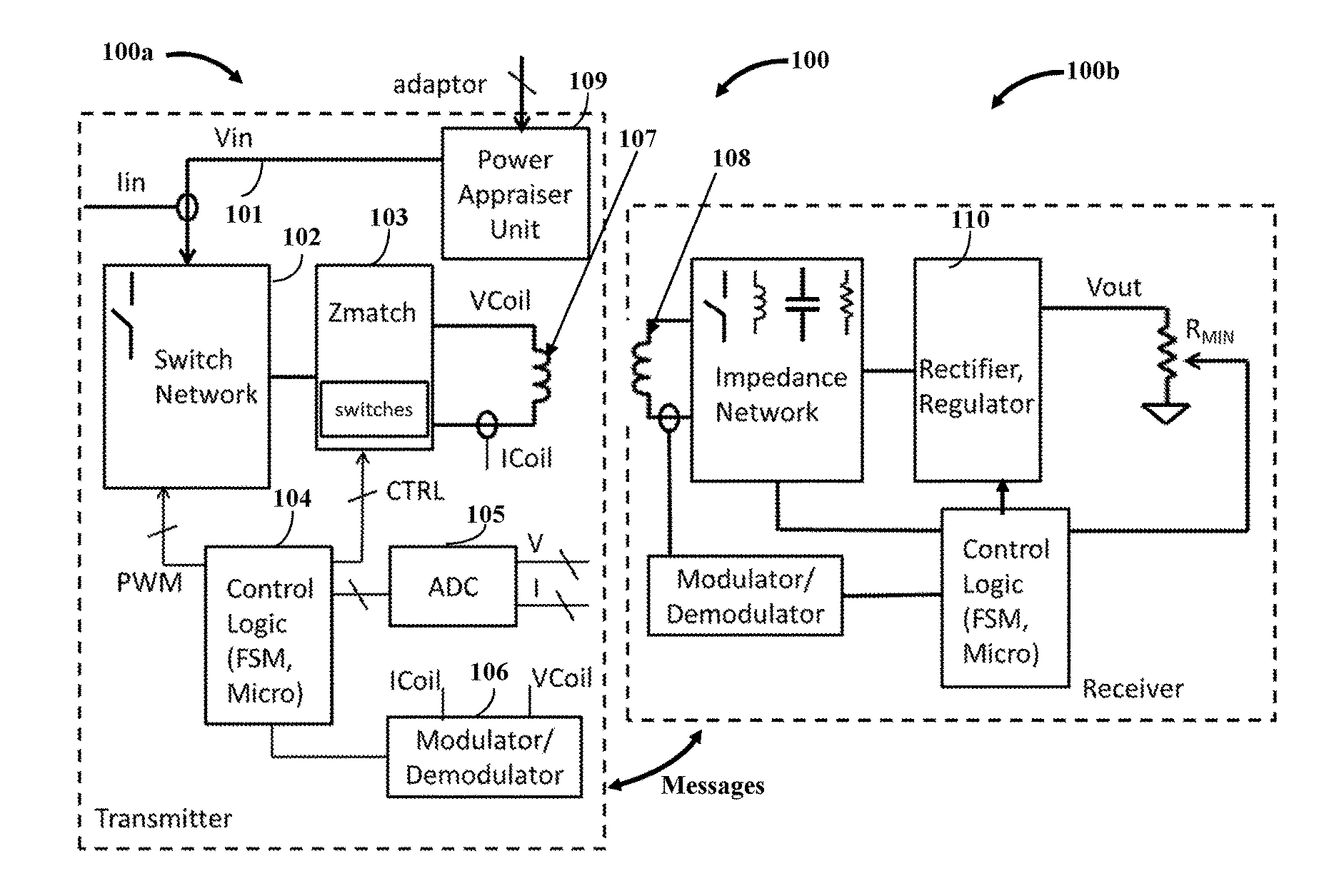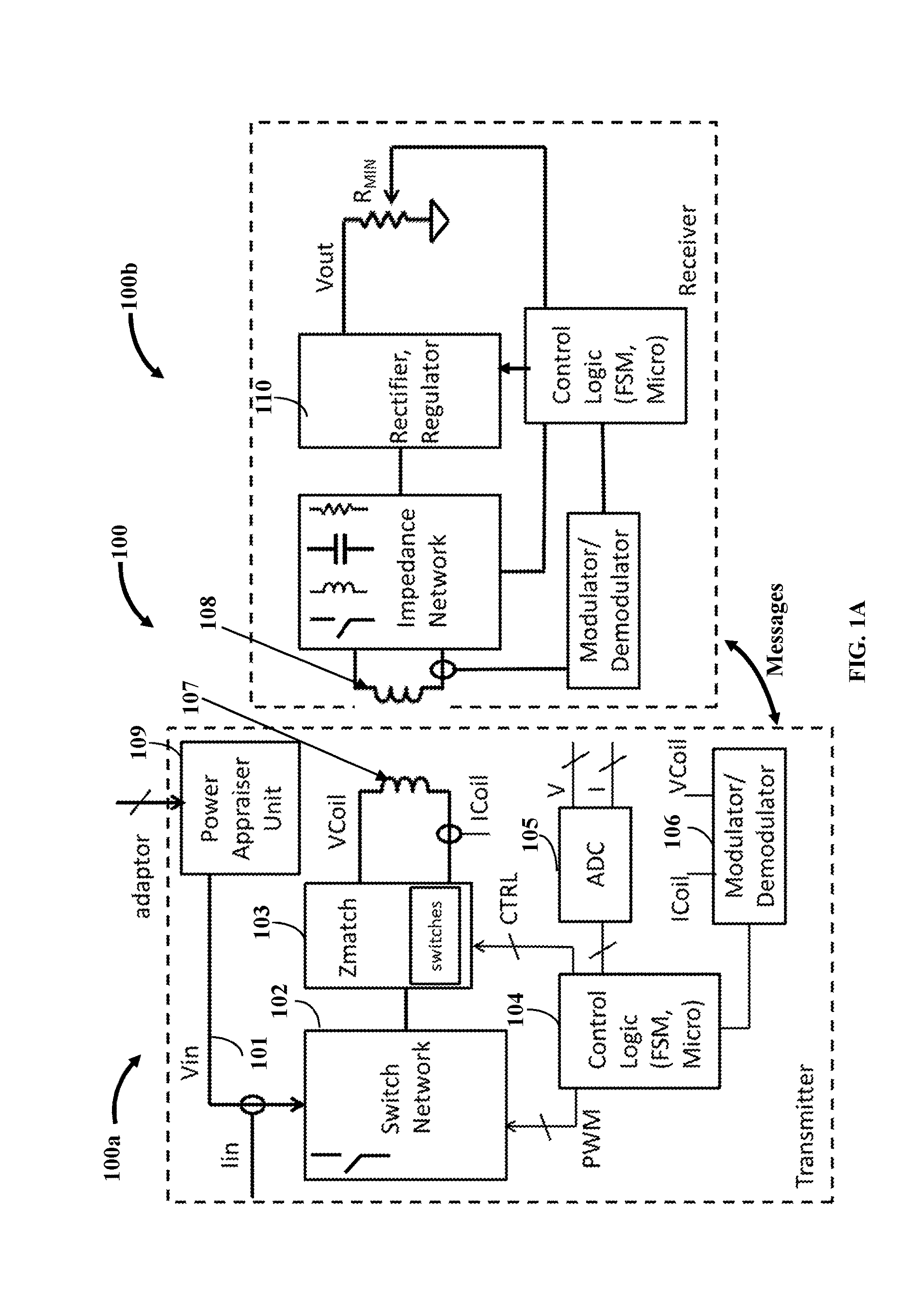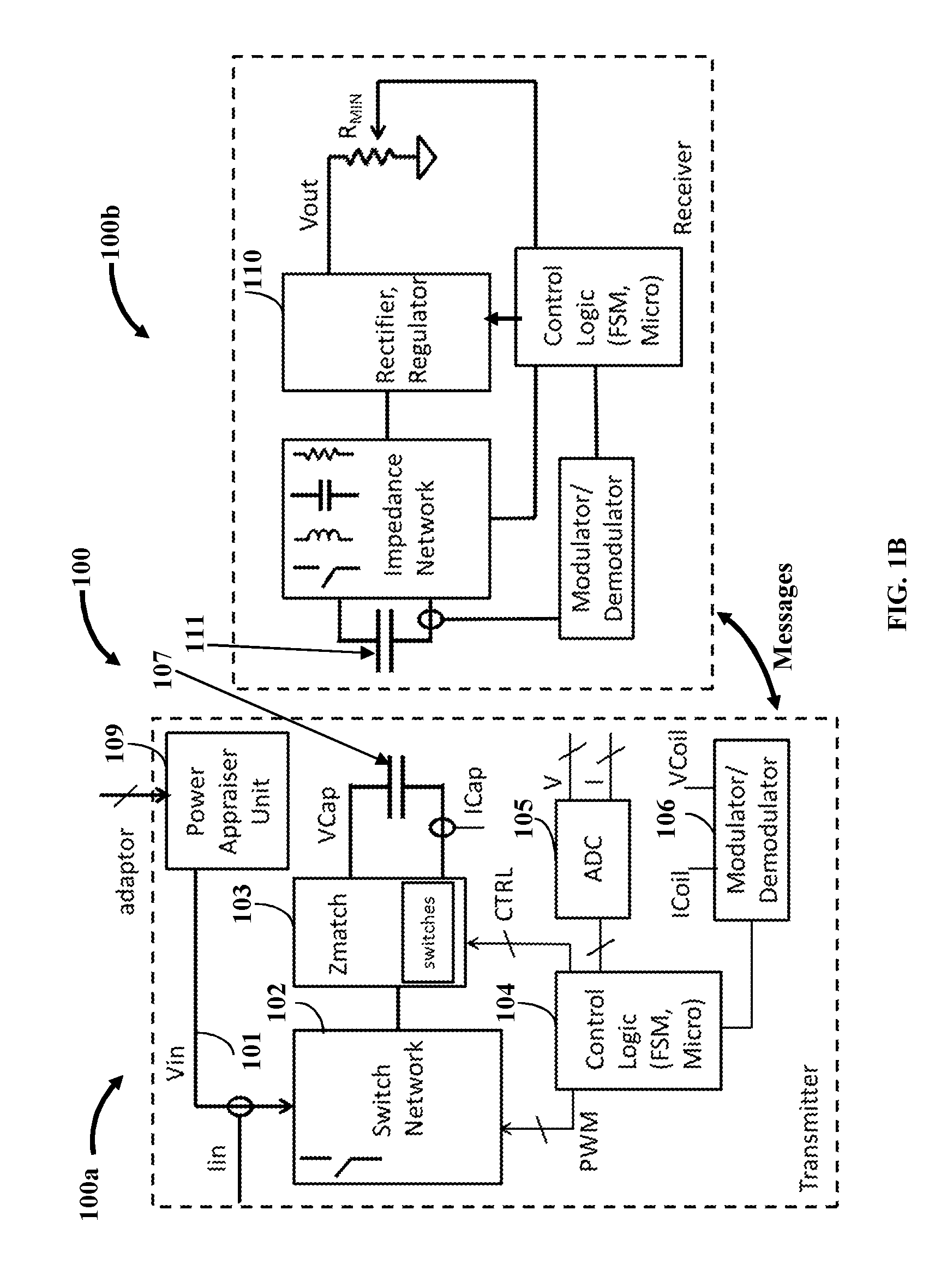Input power appraisal based wireless power system
a wireless power system and input power technology, applied in the direction of battery data exchange, exchanging data chargers, transportation and packaging, etc., can solve the problems of unsatisfactory power needs of wireless power transmitters, adverse effects on battery reliability and life, user experience unpleasant, etc., to overcome unstable power transfer behavior
- Summary
- Abstract
- Description
- Claims
- Application Information
AI Technical Summary
Benefits of technology
Problems solved by technology
Method used
Image
Examples
first embodiment
[0025]FIG. 2A exemplarily illustrates the power appraiser circuit 109 of the wireless power transmitter 100a. The power appraiser circuit 109 is exemplarily illustrated as a “power appraiser unit” in FIG. 2A. The power appraiser circuit 109 has a variable load 203 exemplarily illustrated as “RLOAD” in FIGS. 2A-2B that is controlled by a control logic circuit 104, for example, a state machine, a microcontroller, etc. The variable load 203 is connected to a path carrying the input power to the power inverter. The variable load 203 is configured to vary load characteristics of this path. The variable load RLOAD 203 can be implemented, for example, using resistors, MOSFETs, transistors such as bipolar transistors, duty cycle varied switching, etc. The power appraiser circuit 109 determines the maximum input power available to the power inverter by varying the RLOAD 203 from a high resistance to a low resistance while monitoring the input power which is a product of IIN and VIN sourced f...
second embodiment
[0026]FIG. 2B exemplarily illustrates the power appraiser circuit 109 of the power appraisal based wireless power transmitter 100a. The power appraiser circuit 109 is exemplarily illustrated as a “power appraiser unit” in FIG. 2B. The power appraiser unit has a variable load 203 exemplarily illustrated as “RLOAD” in FIGS. 2A-2B, that is controlled by a logic circuit 201, for example, a state machine, a microcontroller, etc. The power appraisal is performed by having an intermediate stage, for example, a regulator or a switch 204 before the point of observation, that is the maximum input power available to the power inverter is measured after regulator or a switch 204. The regulator or the switch 204 is operably coupled to the variable load 203 connected to the path carrying the input power to the power inverter. The regulator maintains a constant input voltage to the variable load 203 and the switch 204 is used to configure a path for the flow of input current. The power appraiser c...
third embodiment
[0027]FIG. 2C exemplarily illustrates the power appraiser circuit 109 of the power appraisal based wireless power transmitter 100a. The power appraiser circuit 109 is exemplarily illustrated as a “power appraiser unit” in FIG. 2C. One or more input pins of the power appraiser circuit 109 is configured to receive power ratings of the input power sources that indicate the maximum available power from the input power sources. In the first approach, the power appraisal is performed on the basis of an explicit indication on a separate pin. For example, if the input pin is at a 3.3V TTL logic level 1 (>2.2 Volts), then the maximum available power of the power source associated with the pin may be considered as 10 Watts. If the same input pin was at a 3.3V TTL logic level 0 of (2.2 Volts), then the maximum available power of the power source X may be considered 30 W. If pinA and pinB were both at 3.3V TTL logic level 0 (104 and the external controller. In an embodiment of this approach, po...
PUM
 Login to View More
Login to View More Abstract
Description
Claims
Application Information
 Login to View More
Login to View More - R&D
- Intellectual Property
- Life Sciences
- Materials
- Tech Scout
- Unparalleled Data Quality
- Higher Quality Content
- 60% Fewer Hallucinations
Browse by: Latest US Patents, China's latest patents, Technical Efficacy Thesaurus, Application Domain, Technology Topic, Popular Technical Reports.
© 2025 PatSnap. All rights reserved.Legal|Privacy policy|Modern Slavery Act Transparency Statement|Sitemap|About US| Contact US: help@patsnap.com



